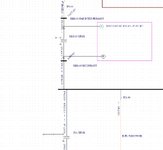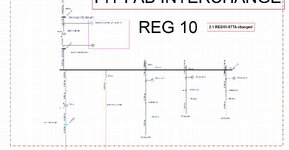Below is a part of an EasyPower model showing a grounding transformer at the first switchgear coming off the large 100 MVA transformer that feeds this Plant. The grounding transformer is 500 kVA, 15kV Wye impedance grounded - 480 delta. Z= 4.87 ohms.
It has a 29 ohm resistor, 300A, 10 sec.
New to this type of installation.... thus the question.
I understand the resistor was sized Ohms law.... R = Vln/I = 8660/300 = 29 ohms. So changing the kVA value or the impedance of the transformer is not effecting the size of the resistor. And I've read the maximum current that could be in the ground circuit then is 300A. As I play around with this upsizing the transformer and lowering the impedance - it appears the number converges to 100A. Which I deduce would mean the 300A = Ia + Ib = Ic .... 300A? But why is that ... Since it uses Voltage to Neutral ? And if you have a 2 or 3 phases to ground... that's a phase to phase fault with high amps. Where would you ever see 300 amps ?
Note on this, there's more ground fault current at a fault at the grounding transformer coming down from the primary side solidly grounded wye connection of the Utility transformer than coming up through the grounding transformer

It has a 29 ohm resistor, 300A, 10 sec.
New to this type of installation.... thus the question.
I understand the resistor was sized Ohms law.... R = Vln/I = 8660/300 = 29 ohms. So changing the kVA value or the impedance of the transformer is not effecting the size of the resistor. And I've read the maximum current that could be in the ground circuit then is 300A. As I play around with this upsizing the transformer and lowering the impedance - it appears the number converges to 100A. Which I deduce would mean the 300A = Ia + Ib = Ic .... 300A? But why is that ... Since it uses Voltage to Neutral ? And if you have a 2 or 3 phases to ground... that's a phase to phase fault with high amps. Where would you ever see 300 amps ?
Note on this, there's more ground fault current at a fault at the grounding transformer coming down from the primary side solidly grounded wye connection of the Utility transformer than coming up through the grounding transformer


